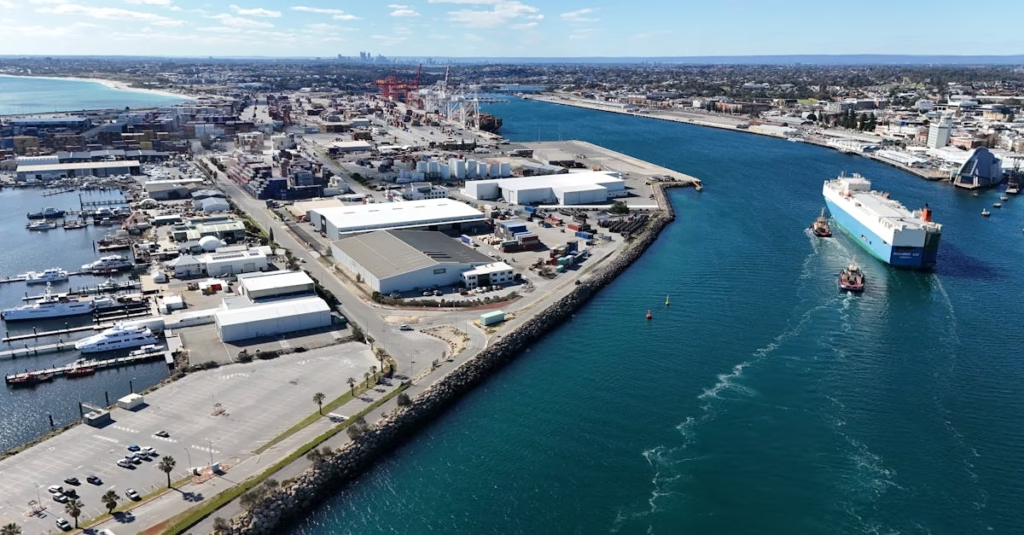Australia’s property market has always cycled between glamour and grit — the city apartments that dazzle headlines, and the quiet regional markets quietly doubling portfolios. In 2025, Geraldton, Western Australia, is no longer quiet. Once overlooked, it’s now sitting at the crossroads of infrastructure, mining, and housing reform — and the numbers speak louder than the noise.
For investors seeking growth without overexposure, Geraldton is shaping into one of the most data-backed regional opportunities in the country.
show moreGeraldton Overview & Location Context
Geraldton lies 420km north of Perth on Western Australia’s Coral Coast — a port city balancing lifestyle appeal with industrial muscle. It’s the primary service and logistics hub for the Mid West region, linking mining exports, agriculture, and renewable energy.
The city’s population, at roughly 40,800, is growing 1.5–2.0% annually, outpacing regional WA averages. Median age sits at 36, showing a strong working demographic supported by steady employment across mining (30%), healthcare (15%), and port/logistics (20%).
Add in a billion-dollar infrastructure pipeline and one of WA’s tightest rental markets — and you get a blend of affordability, stability, and long-term upside that’s rare outside capital cities.
Geraldton’s City-Level Analysis
Geraldton’s 2025 market phase is mid-growth — the sweet spot where fundamentals have matured, yet the full upswing hasn’t been priced in.
- Median house price (Q2 2025): $520,000
- Annual price growth: +25.6%
- 5-year CAGR: 8.2% per annum
- Vacancy rate: <2%
- Gross yield: 5.0–5.5%
These figures outperform most WA peers like Bunbury, Albany, and Busselton, reflecting a rare balance of high yield and growth.
Economically, Geraldton’s stability stems from diversification — not just mining. The $188M Health Campus upgrade, $350M Port Maximisation Project, and $500M+ mining expansion together inject roughly 3,000 new jobs and create demand for over 2,000 homes between 2023–2030.
In short: it’s not a one-trick mining town. It’s a maturing city transitioning toward a more balanced, service-backed economy.

Growth Corridor Analysis
Geraldton’s growth corridors cluster around three distinct investment belts:
- Hospital Precinct (2–5 km radius) – Anchored by the $188M Health Campus redevelopment, this pocket benefits from professional tenants, medical staff, and consistent demand. Low turnover, high yield stability, and strong resale liquidity make it the safest entry point.
- Port & CBD Corridor – Proximity to the Port Maximisation Project makes this a short- to mid-term growth zone. Expect higher yield volatility but faster price appreciation during construction years.
- Wandina–Beresford Belt – Affordable housing corridor targeting young families and essential workers. Ideal for investors seeking early-stage capital growth with dual-income potential.
Collectively, these corridors represent the city’s “three-speed engine” — a balanced ecosystem of cash flow, capital growth, and long-term compounding.
Suburb-Level Analysis
- Wandina: Family-oriented with consistent rental demand and strong resale appeal. Median house prices remain under $550K, yet comparable growth to central precincts.
- Beresford: Emerging lifestyle node with ocean frontage and proximity to the CBD; suited for dual-occupancy and redevelopment opportunities.
- Tarcoola Beach / Mahomets Flats: Coastal suburbs with limited supply; rental yields around 5.2%, strong lifestyle pull for hybrid workers.
- Mount Tarcoola & Strathalbyn: Established owner-occupier pockets providing price stability and consistent rental absorption.
Each suburb contributes to Geraldton’s layered growth story — affordability in the south, yield in the east, and infrastructure proximity near the centre.
Development Potential & Zoning
Local zoning across Geraldton remains investor-friendly. The City of Greater Geraldton’s strategic planning supports medium-density infill near the CBD and hospital precinct, enabling R30–R40 zoned developments ideal for dual dwellings or triplex conversions.
Land availability is tightening — with a housing deficit of 1,800–2,800 dwellings projected through 2030. This shortage, combined with rising construction costs, is likely to sustain price pressure for years ahead.
Investors can leverage the short-term gap by targeting established homes within rezoned corridors — allowing both rental income now and potential subdivision value later.
Forecast & Financial Modelling
Based on conservative assumptions:
| Scenario | Purchase Price | Growth Rate | 2035 Value | Net Profit (10 yrs) | IRR | Yield |
|---|---|---|---|---|---|---|
| Hospital Precinct | $520K | 10–12% p.a. | $1.50M | $1.18M | 23.6% | 5.25% |
| Port/CBD Corridor | $520K | 9–10% p.a. | $1.30M | $1.11M | 22.9% | 5.4% |
| Growth Belt | $520K | 8% p.a. | $1.15M | $0.84M | 21.7% | 5.0% |
With refinancing from 6.5% to 5.0% post-2027, holding costs remain low, and cash flow remains positive under most conditions. Even under moderate assumptions, portfolios double roughly every 6–7 years.
In a national landscape where yields have compressed, Geraldton’s dual benefit — cash flow today, capital tomorrow — gives it a structural advantage.

Strategic Timeline
Phase 1 (Q4 2025 – Q1 2026): Enter market pre-acceleration. Focus on hospital precinct and Wandina before national attention peaks.
Phase 2 (2026–2028): Refinance as interest rates stabilise. Reinforce portfolio with second acquisition leveraging equity gains.
Phase 3 (2028–2030): Capture secondary appreciation post-port completion. Aim for partial equity release or rental optimisation.
Phase 4 (2030–2035): Hold through compounding growth phase; prepare for SMSF rollover or strategic exit aligned with infrastructure maturity.
This staggered approach compounds returns while reducing exposure to timing risk — a method more akin to capital stewardship than speculation.
Risk & Mitigation
| Risk | Impact | Likelihood | Mitigation |
|---|---|---|---|
| Commodity Volatility | Medium | Medium | Diversify beyond mining; focus near hospital precincts. |
| Regional Liquidity | Medium | Medium | Buy within 5 km of CBD; ensure strong property management. |
| Interest Rate Sensitivity | Moderate | High | Blend fixed and variable rates; refinance after 2026. |
| Construction Delays | Low | Medium | Prioritise established dwellings. |
| Tenant Concentration | Low | Low | Target healthcare, logistics, and professional tenants. |
| Market Timing Risk | Medium | Low | Enter early; avoid late-cycle price compression. |
Overall Risk Rating: Low–Moderate — well-balanced given infrastructure maturity and economic diversity. For disciplined investors, Geraldton presents risk-adjusted returns that stack up nationally.
Final Investment Verdict
Geraldton is no longer an “emerging” market — it’s a maturing regional economy backed by fundamentals most capitals envy.
- High rental yields (5.0–5.5%)
- Sustained housing undersupply (1,800–2,800 homes)
- $1B+ infrastructure pipeline
- Economic diversification across mining, health, and logistics
It represents a 10-year horizon opportunity, not a short-term trade. For investors seeking balance between cash flow and long-term capital growth, Geraldton’s window is open through Q4 2025–Q1 2026.
Those entering early position themselves before institutional capital and national investors crowd the field.
Proceed with strategic allocation in late 2025. Geraldton represents a rare blend of yield, growth, and downside protection through 2035.
If you’re ready to position your portfolio ahead of Australia’s next regional growth cycle, start with clarity. Our Property Portfolio Builder Service helps investors identify, model, and secure high-performing properties like those in Geraldton — without overleveraging.
📞 Book a strategy session today to explore how to turn your equity into a long-term growth engine.
Disclaimer
This article is general information only and does not constitute financial or investment advice. Investors should seek professional guidance tailored to their circumstances. Market data reflects estimates available as of October 2025 and may change with future economic or policy developments.
show less